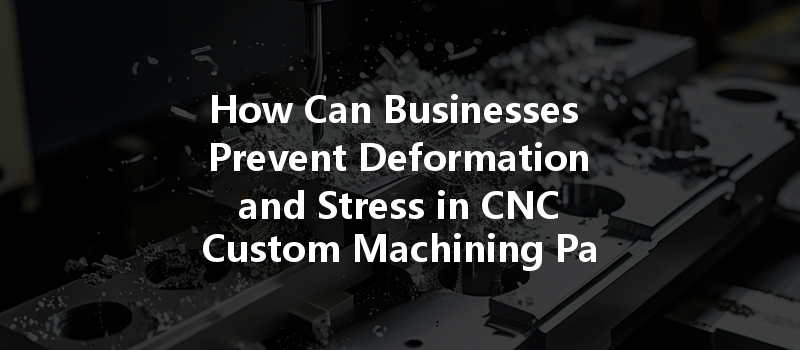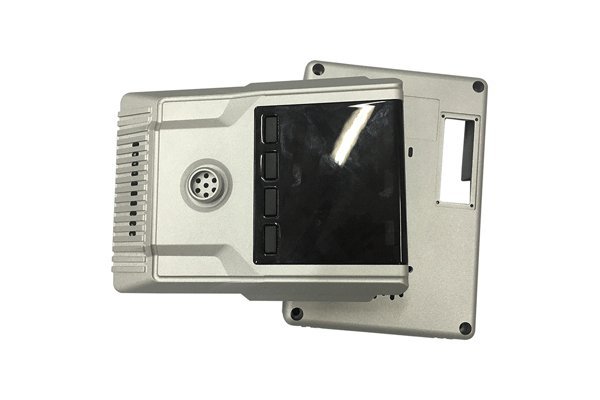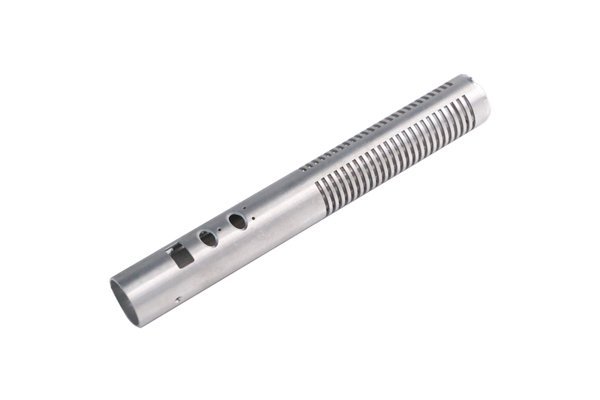Did you know that improper machining techniques can lead to deformation and excessive stress in manufacturing components, resulting in costly repairs and production delays? In fact, studies indicate that more than 30% of CNC machining errors are related to the warping and stress of parts during production processes. This statistic highlights the importance of understanding and implementing effective strategies to prevent deformation and stress in CNC custom machining.
As industries continue to embrace CNC (Computer Numerical Control) technology for precision manufacturing, it’s crucial to recognize the challenges that come with it. CNC machining is celebrated for its ability to produce intricate components with high precision, but if not managed correctly, it can lead to unsatisfied customers and damaged reputations. Therefore, understanding how to prevent deformation and stress in components is not just beneficial—it’s vital for success.
This blog will delve deeper into the critical aspects surrounding deformation and stress in CNC machining and present detailed solutions to some of the most pressing problems faced by businesses in the field. Whether you’re a seasoned professional or a newcomer to CNC machining, the insights provided here will assist in optimizing your processes, enhancing product reliability, and ultimately, ensuring customer satisfaction.
Understanding Deformation and Stress in CNC Machining
The Basics of CNC Machining
CNC machining is a subtractive manufacturing process that employs computer-controlled tools to remove material from a workpiece. Components made from various materials, including metals, plastics, and composites, can be shaped accurately. However, this mechanical process can induce stresses in the workpieces which may lead to deformation, particularly when the part is subjected to heat and cutting forces.
What Is Deformation?
Deformation refers to the alteration of an object’s shape or dimensions when subjected to mechanical stress. In CNC machining, deformation can occur due to a variety of factors such as:
What Is Stress?
Mechanical stress occurs when a force is applied to the material, causing internal resistance against deformation. Different types of stresses can appear during CNC machining, and these include:
Understanding both deformation and stress is crucial in adopting strategies for minimizing their impact during CNC machining. Let’s explore several methods that can significantly reduce deformation and stress in custom machining parts.
Strategies to Prevent Deformation and Stress in CNC Custom Machining
Choosing the right material is the foundational step for minimizing the risk of deformation and stress. Different materials exhibit varying characteristics in response to machining processes. For example, metals like aluminum and steel have distinct thermal expansion coefficients, hardness, and tensile strengths.
Key Considerations:
The tools used in CNC machining play a pivotal role in part performance. Ensuring tools are optimized will help mitigate deformation.
Best Practices:
Managing cutting parameters such as speed, feed rate, and depth of cut is essential in controlling the amount of stress and heat produced during the machining process.
Recommendations:

Cutting fluids are often overlooked in CNC machining, yet they significantly contribute to heat dissipation and friction reduction. Appropriate selection of cutting fluids can aid not only in cooling the workpiece but also lubricating the cutting tool, enhancing longevity, and reducing the chance of deformation.
Fluid Considerations:
The method of workpiece clamping can significantly influence the outcome of the CNC machining process. Poor clamping can lead to vibrations and unnecessary movement during machining.
Clamping Techniques:
Given that thermal variations can lead to significant deformation, employing thermal management techniques is crucial.
Techniques Include:
Adaptive machining involves smart technology that adjusts various parameters throughout the machining process based on real-time feedback.
Advantages:
How to Evaluate and Continuous Improvement
To ensure that deformation and stress are kept under control, organizations need to have an evaluation and continuous improvement strategy in place:
Collecting data from the CNC machining process can offer insights into areas where deformation might be occurring. Metrics to consider include:
Performing a thorough analysis of this data will help identify recurring issues and facilitate better decision-making.
Encourage a feedback culture within the production team. Operators can provide valuable real-time insights into potential stress issues before they escalate.
Conduct regular reviews of processes and materials to stay ahead of potential issues. This can include trials of new materials or techniques and adapting based on feedback from operators.
Preventing deformation and stress in CNC custom machining parts is a multifaceted challenge that requires careful attention to material selection, tooling, cutting parameters, and process optimization. However, businesses that take proactive steps to address these issues can produce superior components that meet rigorous quality standards, enhancing customer satisfaction and reducing waste.
By investing in optimal tooling, adopting appropriate cutting fluids, managing thermal effects, and implementing intelligent machining techniques, manufacturers can significantly mitigate the risk of deformation and stress in their products. Understanding and actively managing these factors will not only improve manufacturing efficiency but will also strengthen a company’s reputation in the competitive landscape of precision machining.
Reflecting on this blog, it’s evident that as technology evolves, so too must our strategies in CNC machining. The importance of maintaining high-quality standards in parts production cannot be overstated, and the strategies shared are crucial for both existing businesses and those entering the CNC machining realm. A commitment to excellence and continuous improvement will ultimately define the future of successful enterprises in this industry. Keep this discussion active, continuously analyzing your techniques to ensure you’re not just meeting standards, but setting them.






